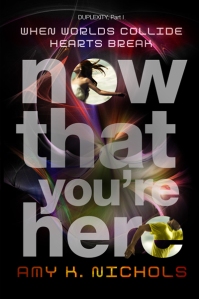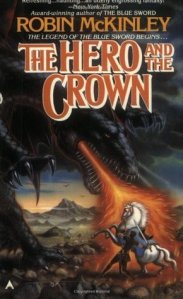 Hey everyone! We’ve been on a bit of a hiatus while we slew dragons, rerouted rogue earth-crunching asteroids, discovered and perfected warp drive, and wrote novels. But now we’re back with a new episode of Curb Chat, and more episodes on the dock and ready to stream.
Hey everyone! We’ve been on a bit of a hiatus while we slew dragons, rerouted rogue earth-crunching asteroids, discovered and perfected warp drive, and wrote novels. But now we’re back with a new episode of Curb Chat, and more episodes on the dock and ready to stream.
In this episode, we decided to do some micro interviewing, asking each other off the cuff questions about our writing routines, our influences and our greatest aspirations. Check it out!
Click here to listen on our Podbean channel.
Filed under: Curb Chat Tagged: author interviews, Curb Chat, fantasy, geek, novels, Parking Lot Confessional, podcast, science fiction, writing advice
Well, after undertaking a massive reorg of my bookshelves, I finally did what I should have done all those years ago – I replaced the book and reread it.
As a teenager, I’d greatly admired the prose, in fact that was what I’d prized most about the book. And I’d loved the protagonist Aerin, who was a real anomaly back then. Nowadays you can’t throw a rock without hitting a carbon copy Katniss, but back then girls in fantasy fiction were almost all princesses, maybe a healer and/or sorceress if you were lucky. (I am not talking about other classics from this era, but of inferior books that crowded the library shelves a few decades ago and have since gone out of print.) Heck I’d even argue that Aerin is an anomaly now, due to her unusually complex yet well-defined character. So it was with these qualities in mind that I reread the book.
I’d remembered correctly that the book was well written, that Aerin was a fascinating yet relatable girl. But there was something amazing about The Hero and The Crown that I’d not noticed when I read the book as a kid, something that leapt out to my now-trained eye. It is this: The Hero and The Crown is perfectly constructed. It is impeccably constructed.
I’m gonna run through it real quick (mild/moderate spoilers that shouldn’t deter enjoyment of the book).
Aerin, the young protagonist, has a high position at court but is not respected, in fact she is barely tolerated because of her parentage. Because of this parentage she has no magic, something that should have manifested before puberty. A more powerful cousin teases Aerin into eating a plant that almost kills her, but over two years she fights her way back to a sound mind by developing an interest in reading — and a sound body by caring for an abandoned horse.
While reading Aerin discovers an old, inaccurate recipe for an ointment of fire resistance. She obsessively tests and retests the recipe, searching for the correct proportions of herbs. Taking these actions, and finding success in them, makes her forget about her lonely, anxious life. Aerin becomes more and more confident in who she is–so much so that she starts to challenge the others and find her place in the world. Winning many small victories makes her emboldened. She challenges a mighty enemy, an ancient dragon, and wins, but at horrific cost, being burned nearly to death.
Aerin must change again, enrich herself again by learning magic, or die from her wounds. Then she must face the worst enemy yet, a member of her family from the “bad” side of her tree, who knows far more magic than she. In the meantime Aerin has two separate love interests (!), but the way she relates to them changes as she changes.
Why did I write all that out? –Because there’s the classic pattern of a plot, right there, very clearly, and it’s especially well done in this book because the protagonist’s internal and external struggles are always in interplay.
The flawed protagonist endures a small suffering, based on his internal flaws. He rallies, finds unique ways to grow and move past the suffering. Some of the flaws diminish, some remain, or new flaws (overconfidence, haste) pop up. He strikes out, enjoys a few successes, then a catastrophic failure. He rallies again, in a logically related yet different way, transforms again, dispensing a few more flaws (although one still remains) and faces the true antagonist. This is the classic construction of a genre novel. Aerin’s internal pain and conflict has to be worked out for her to face her external obstacles. This is true growth, not just leveling up.
Since we’re talking about construction I’d also like to note that the proportions of The Hero and The Crown are well balanced: the denouement (which I didn’t mention in detail because massive spoilers) is not hasty, but deals with all remaining lose threads with a fair and even hand. I think we novice and journeymen writers tend to barrel through the denouement at top speed. This is usually a mistake. THatC is a slim volume you can read in an afternoon, but nothing is rushed. Everything receives its proper weight.
I’d recommend all aspiring genre writers read this book multiple times. Once to enjoy it. Then again to study it.
Filed under: Amy McLane, Fiction, Plotting, Reading, Writing Tagged: bellissima!, how to plot a novel, plotting, plotting a novel, Robin McKinley, The Hero And The Crown
 Do the negative voices ever get you down? You know, the offhand comment from a frenemy, or the critical voice in your own head? Well, they get us down sometimes, so we decided to talk about how we combat those negative voices and get on with our writing. Check it out in our newest episode of Curb Chat!
[audio http://parkinglotconfessional.podbean.com/mf/web/pv3tzs/CurbChatEpisode24DefeatingtheNegativeVoices.m4a]
Do the negative voices ever get you down? You know, the offhand comment from a frenemy, or the critical voice in your own head? Well, they get us down sometimes, so we decided to talk about how we combat those negative voices and get on with our writing. Check it out in our newest episode of Curb Chat!
[audio http://parkinglotconfessional.podbean.com/mf/web/pv3tzs/CurbChatEpisode24DefeatingtheNegativeVoices.m4a]Filed under: Curb Chat Tagged: creative struggles, critical self talk, critics, Curb Chat, Depression, frenemy, negativity, self care
 Hi there! It’s time for a new episode of Curb Chat. This time we’re talking about books–specifically, how we decide what to read when it comes to new authors or books outside our usual reading circles. If you have thoughts you’d like to share, please add them to the comments.
Hi there! It’s time for a new episode of Curb Chat. This time we’re talking about books–specifically, how we decide what to read when it comes to new authors or books outside our usual reading circles. If you have thoughts you’d like to share, please add them to the comments.
Enjoy!
[audio http://parkinglotconfessional.podbean.com/mf/web/ckmzxw/CurbChatEpisode23-Howwedecidewhattoread.m4a]Filed under: Curb Chat Tagged: Books, Curb Chat, podcast, Reading
 Hey everyone! Here’s a new episode of Curb Chat and we’re getting out geek on again. In this episode, we talk about what we’re excited about in the coming year, everything from books to movies to TV shows. And a good time was had by all.
Hey everyone! Here’s a new episode of Curb Chat and we’re getting out geek on again. In this episode, we talk about what we’re excited about in the coming year, everything from books to movies to TV shows. And a good time was had by all.
Enjoy!
[audio http://parkinglotconfessional.podbean.com/mf/web/yp6bs9/CurbChatEpisode22GeekingOutin2015.m4a]Filed under: Curb Chat Tagged: Amy K. Nichols, Amy McLane, Curb Chat, fantasy, geek, humor, podcast, pop culture, publishing, Ryan Dalton, S. C. Green, science fiction, Writing
 Hello! We’re back with a new season of Curb Chat! In the first episode we discuss writing resolutions for the new year, making them and keeping them. It’s a little longer than usual, but it’s full of good, thoughtful and practical stuff for all you writers out there who are resolved to finish your novels this year. There’s also a really interesting lightning round at the end. (That Amy McLane and her wicked lightning round questions!)
Hello! We’re back with a new season of Curb Chat! In the first episode we discuss writing resolutions for the new year, making them and keeping them. It’s a little longer than usual, but it’s full of good, thoughtful and practical stuff for all you writers out there who are resolved to finish your novels this year. There’s also a really interesting lightning round at the end. (That Amy McLane and her wicked lightning round questions!)
We hope you enjoy!
[audio http://parkinglotconfessional.podbean.com/mf/web/fcq9v8/CurbChatEpisode21-WritingResolutions.m4a]Filed under: Curb Chat Tagged: Curb Chat, podcast, Resolutions, writing advice, writing your novel
 We’re back with a new episode of Curb Chat! In this episode we discuss action plans: how we decide what to write next. By the time we got to the lightning round, we were pretty punchy. Hilarity ensued (of course).
We’re back with a new episode of Curb Chat! In this episode we discuss action plans: how we decide what to write next. By the time we got to the lightning round, we were pretty punchy. Hilarity ensued (of course).
We’ll be back next year with a new season of episodes. In the meantime, if you missed any previous episodes or want to relive the fun, check out our Curb Chat archives.
Filed under: Curb Chat Tagged: Curb Chat, fantasy, humor, ideas, novels, podcast, science fiction, short stories, Writer Resources, writing advice
Filed under: Curb Chat Tagged: Curb Chat, humor, kicking a dead horse, podcast, when to give up on a story, writing advice
Ever have a life event interrupt your writing routine, and then lament on how to get your momentum back? Well, we sure have, and we wanted to share what helped us get our go going again.
We hope you find this episode helpful! And if you have suggestions for future episodes, we’d love to hear them.
And a shout out/thanks to First Draft Book Bar at Changing Hands Phoenix for use of their awesome common room.
Filed under: Curb Chat Tagged: advice, Curb Chat, how to write, podcast, when life gets in the way of writing, writer's block, writers life, writing routine

These are not mine.
I’m taking a ceramics class this semester and really enjoying learning a new artistic outlet. We started out with hand building different kinds of vessels. And we recently progressed to throwing on the wheel, which I wrote about a little on my own blog. In the last couple of weeks, we’ve been glazing our bisque-fired pieces, which has been such an eye-opening experience.
There are drawers of small, round tiles in the glazing room at the ceramics studio, each showing the post-firing results of different glaze combinations. Some of them are lovely–I tend to gravitate toward the blues–and some are kind of meh. I clicked through the tiles, deciding on the best dressing for the couple of vases and bowls I had ready for glazing. When I’d made up my mind, I glazed the pieces and set them aside to be fired.
And that’s all I can do. From then on, what happens with those vases and bowls is completely out of my hands.
While in the kiln, someone else’s piece might explode and ruin everyone else’s work. Or someone’s glaze might ooze all over and run into my piece and ruin it. Or the glaze combination might come out all ooky looking instead of the pretty tile in the drawer. Any number of things could go wrong during the firing process, and there’s just nothing you can do about it.
Which might be why the glazing part of the ceramics class is my least favorite so far. It’s just so unpredictable. I’m really starting to see those parts of me that like to know what will happen, that like being in charge.
Ceramics is teaching me a lot about writing and publishing.

This is mine.
My debut novel, Now That You’re Here, comes out in a month. (Excuse me while I go breathe into a bag.) And if there’s one thing I’m quickly learning, it’s that there are so many things that are outside of my control.
Will people buy it? Will they like it? Will they want to read more from me?
I have no idea. And I have no say in any of it. It’s completely out of my hands. Kirkus gave the book a good review, and PW gave it a star, so I’m not completely without hope, but still…who knows?
It reminds me of what my mentor, Jim Sallis, said when his novel, Drive, was being made into a movie. Our class ask him a bunch of questions about the process, including, What if they change the story? What if you don’t like what they do? And he would always tell us the story wasn’t his anymore. Once the book is done and off to production, it no longer belongs to him. He lets it go and gets to work on the next thing.
There’s so much wisdom there.
So, here’s my confession: I’m trying to let go and get to work on the next thing. It’s very distracting having a novel coming out in a month. Sometimes I’m too wound up to write. (Or sleep.) But I’m also anxious to dig into the next thing, to write the next story. That’s the fun part, probably because it’s the part I can control.
About Now That You’re Here
Where to pre-order
Filed under: Amy K. Nichols, Confessions, Writing Tagged: Amy K. Nichols, Arts, ceramics, creativity, learning, Now That You're Here, pottery, publishing, Writing

